Get that Edge for your Garden
- vendiolaads
- Aug 9, 2022
- 4 min read
Updated: Aug 11, 2022
Creating edgers to your garden can:
give a finished, polished look to your garden
add texture and visual appeal to your garden
clearly demarcate garden areas
prevent plants or their leaves from invading pathways or garden turf
add a stunning finish to any garden space
help to guide the eye in whichever direction you choose
protect your investment – patio and pathway edgings help to maintain the strength and integrity of your chosen paving
keep the integrity of your lawn and flowerbeds by separating them
make lawn mowing easier and faster
And that is just a short list of what garden edgers can do.
In an earlier blog story, I shared our thrifty — as in almost free — garden edgers made of found objects collected from our yard and the neighborhood. In this related blog story, I will discuss mainly manufactured, store-bought edging materials which generally look more polished but are more expensive, to edge your garden.
However, I shall not include the overly ostentatious edging treatments of the rich and the famous or those who felt the need to throw extra money on garden edging projects, for they are beyond the resources of most home gardeners and sensible home and garden renovators. They definitely are way beyond my level and outside my league.

Aggregate concrete is very popular for edgers, retaining walls, planters, and other garden works.
Many home gardeners who have manufactured garden edgers also use aggregate concrete. With concrete, you can choose the shape, texture, height, and other characteristics and features to suit your home garden.
One advantage of such edging is its multi-purpose use. The edgers can be raised to a seating level, so you get plenty of areas in the garden where you can party and socialize without having to bring out lawn chairs or mini tables for food and drinks.
Concrete can provide terraced gardens, so you can view your garden at various levels all at once. This gives you a panoramic view.

Railroad ties or 4 x 4 treated lumber, usually made of long-lasting cedar, are the #1 choice for garden edgers, retainers, and steps. They are easy to install.

Formed concrete, painted to match your garden colors, can be very versatile and appealing. In the above photo, the concrete edging, fireplace, and wall become well incorporated into the style and purpose of this seating area.
Allan Block system
The Allan Block system is so versatile for various garden uses, from edgers to retaining walls, among others.
An Allan Block system features blocks made of high-strength concrete, so it will not rot like a timber wall. The system is one of those garden installations that you need not have to re-do for many, many years.
You can stack the blocks in a vertical manner either straight up and down or with a slight angle. If using Allan Blocks for high retaining walls try stacking the blocks at an inward angle to compensate for increased soil pressure during wetter periods. The second photo above shows the blocks spaced apart to create planting areas within the blocks. From above or from eye level, this arrangement adds a unique eye-catching feature to your garden.
Allan Block units come in a variety of different sizes, types, and colors to meet various aesthetic and performance needs. Generally also used to create terraced gardens, Allan Blocks can be installed for many other uses, from creating a small planter to holding up soil and rocks or any specific purpose, big and small.
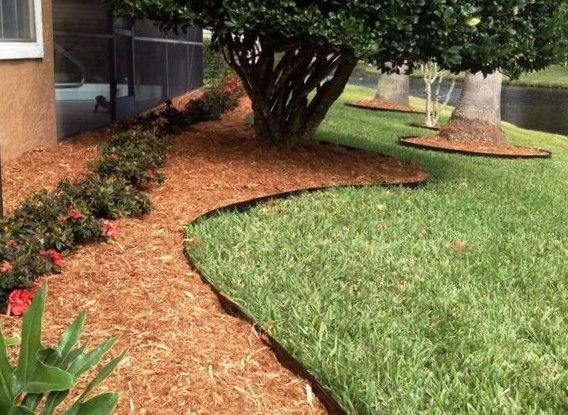
Plastic or resin garden edgers are inexpensive edging materials. Some are easy to work with but can be flimsy, like a plain thin strip that can be sunk in place. Of course, they are the cheap ones. Yet they still perform the function of edging your garden, separating the planted area from the grassed portion.
A step-up to plastic edgers might be metal strip edgers. One downside might be the eventual rusting of the metal strip. But you might actually want the patina. The patina can give your garden a needed well-aged look.
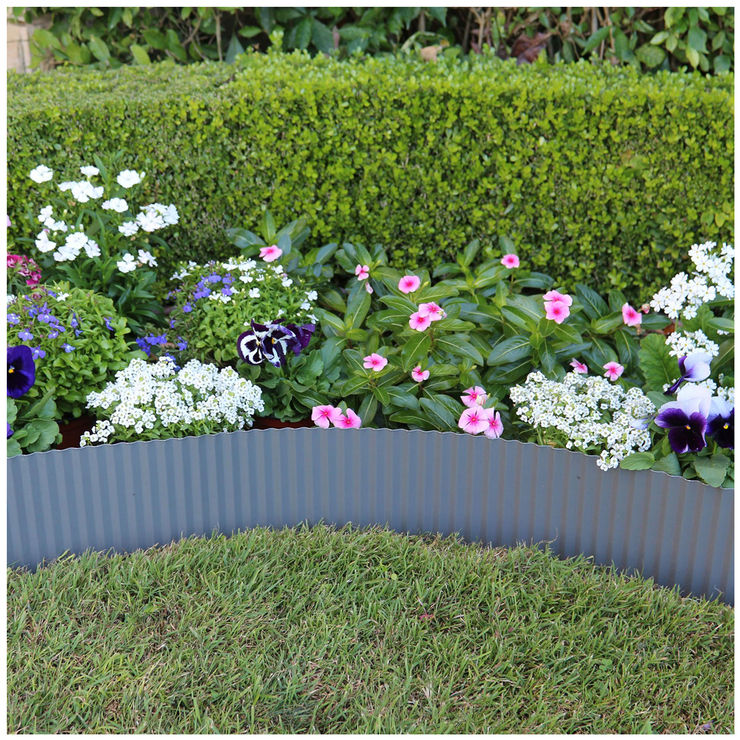
Plastic or resin doesn’t have to be the boring, plain edging of the past. Plastic or resin edgers have come a long way from those rolls of hard plastic that your parents used. They have leveled up in their creative look.
You can now buy good-looking plastic or resin edging materials from home improvement stores and garden centers. Many of the big-box department stores also carry them. Purchase the roll and dress it up, and install the prefabricated pieces as a landscape edging.
Resin borders now come in many designs and look
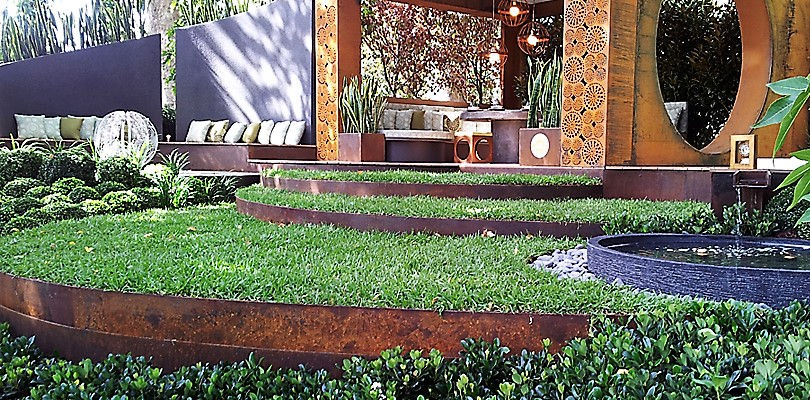
Resin borders now come in decorative patterns as well, giving you the selection that blends in with your overall landscape plan. Many designs mimic hewn stones, brick pavers, and stone lattice fencing.
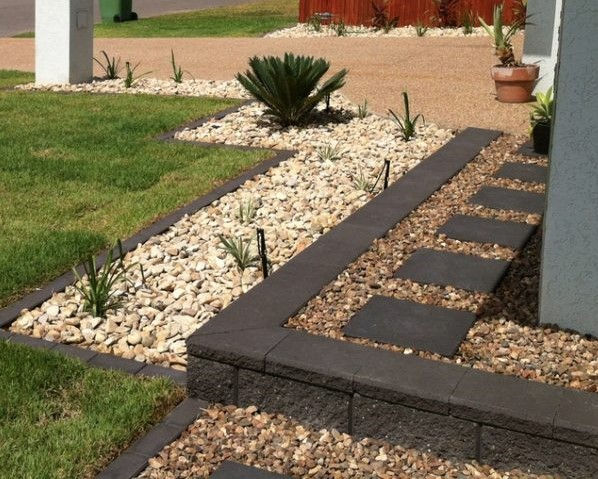
If you prefer the more authentic stone look, go for the hewn stone edging materials. They’re much pricier but worth the investment, especially if you have a formal garden and your house is made of stone, brick,, or slate, or has the modern glass and metal look. You want materials in your garden to complement your million-dollar house.
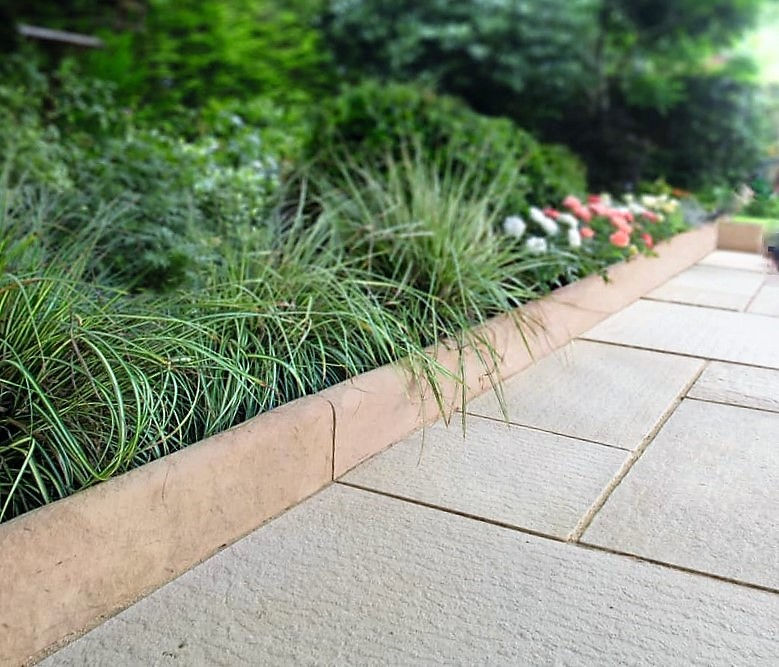
Made to replicate incredibly sought-after flame-aged natural stone, the hewn stone edging is the ideal high-end finishing touch to your patio or pathway, or garden walls.
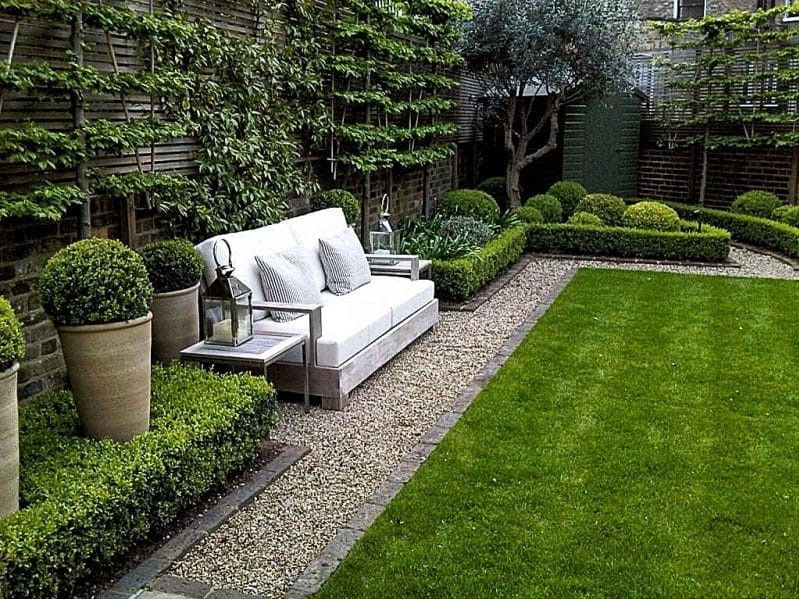
The above photo shows a combination of regular paving stone and pea pebbles and still looks very clean and appealing. Such edging treatment can be used for formal gardens and informal, laid-back garden schemes.
The market has come up with many edging materials, so you now have a wide choice for your garden. The materials covered in this story are but some of them. It’s a pick-and-choose, world, so don’t hesitate to get that edging material that makes your garden even look more organized, finished, appealing, and truly a source of joy and pride. Just do it. Get that edge.











Comments